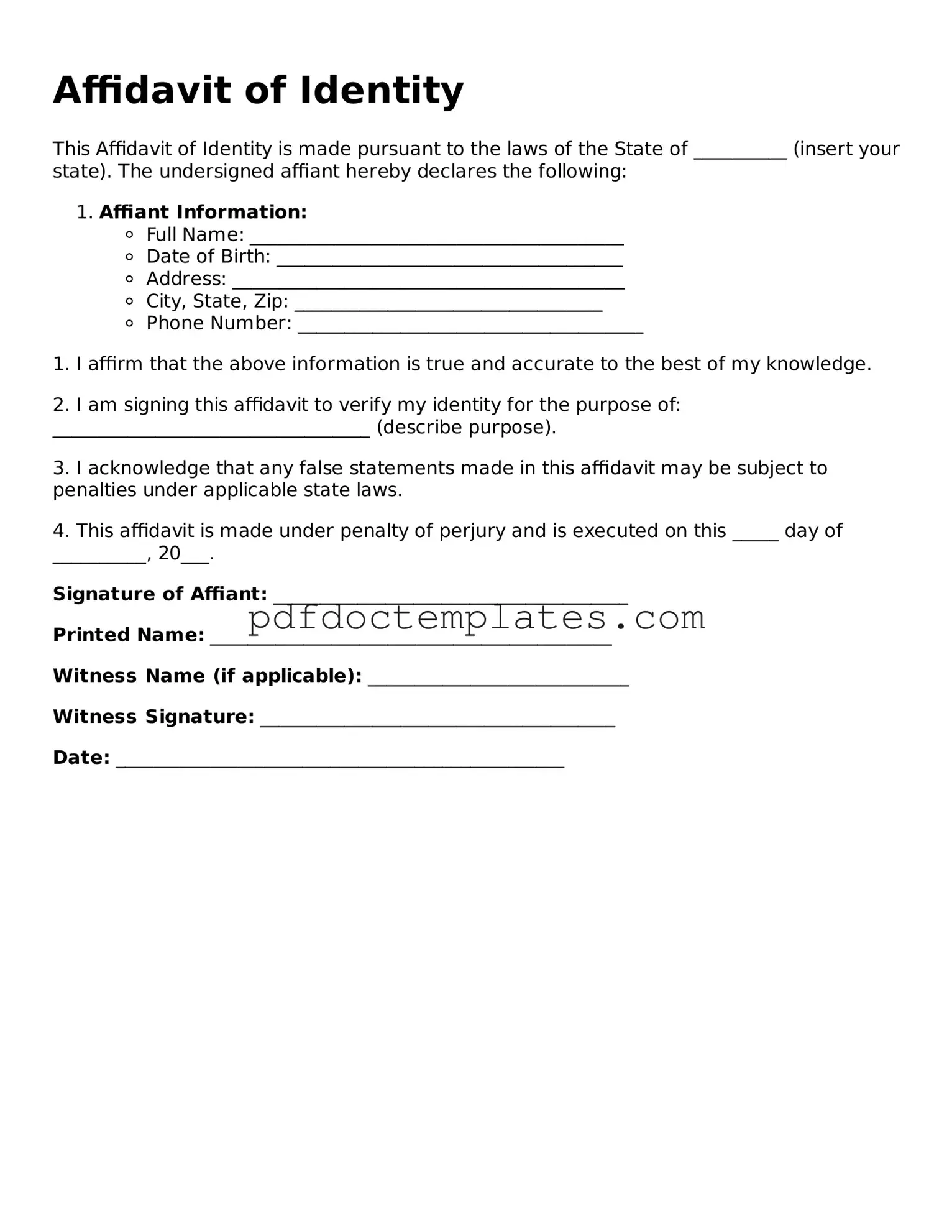Affidavit of Identity
This Affidavit of Identity is made pursuant to the laws of the State of __________ (insert your state). The undersigned affiant hereby declares the following:
- Affiant Information:
- Full Name: ________________________________________
- Date of Birth: _____________________________________
- Address: __________________________________________
- City, State, Zip: _________________________________
- Phone Number: _____________________________________
1. I affirm that the above information is true and accurate to the best of my knowledge.
2. I am signing this affidavit to verify my identity for the purpose of: __________________________________ (describe purpose).
3. I acknowledge that any false statements made in this affidavit may be subject to penalties under applicable state laws.
4. This affidavit is made under penalty of perjury and is executed on this _____ day of __________, 20___.
Signature of Affiant: ______________________________________
Printed Name: ___________________________________________
Witness Name (if applicable): ____________________________
Witness Signature: ______________________________________
Date: ________________________________________________
